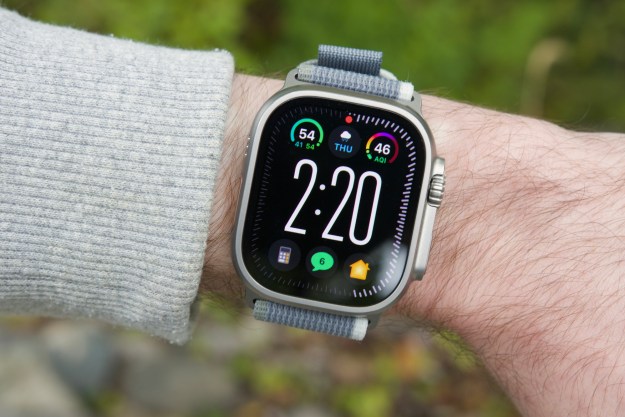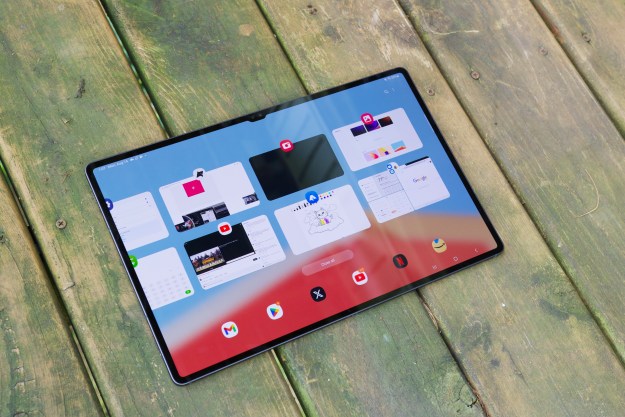![]() Success breeds imitation. Apple’s iPad is a massive success, selling millions every month. It’s been so successful that it’s actually putting a bit of a damper on PC sales this year. As such, every PC maker seems compelled to release its own tablet, and every tablet seems compelled to be the iPad. Only a few tablets have dared stray from Apple’s super-thin, minimalist style. Most notably, PC-makers Acer, Asus, and Toshiba have decided to put functionality above design, to a degree. We’re not yet sure if this PC mentality will be a hit with consumers, but hey, we like it. Below, we’ve compared two Android tablets: the Acer Iconia Tab A500 and the Toshiba Thrive, both of which try to bring a few elements of the PC world to the tablet experience, with varying degrees of success.
Success breeds imitation. Apple’s iPad is a massive success, selling millions every month. It’s been so successful that it’s actually putting a bit of a damper on PC sales this year. As such, every PC maker seems compelled to release its own tablet, and every tablet seems compelled to be the iPad. Only a few tablets have dared stray from Apple’s super-thin, minimalist style. Most notably, PC-makers Acer, Asus, and Toshiba have decided to put functionality above design, to a degree. We’re not yet sure if this PC mentality will be a hit with consumers, but hey, we like it. Below, we’ve compared two Android tablets: the Acer Iconia Tab A500 and the Toshiba Thrive, both of which try to bring a few elements of the PC world to the tablet experience, with varying degrees of success.
For an in-depth look at each tablet’s own merits, read our reviews of the Toshiba Thrive and Acer Iconia Tab.
Hold and feel
Winner: Toshiba Thrive

We also like the rippled plastic back shell of the Thrive. The Iconia Tab has a slick metal feel to it, and it always felt a bit slippery in the hands, which is sometimes the last thing you want when you’re carrying around a $400 to $700 electronic device. We haven’t tested this theory, but we would gamble that the Thrive could take more of a tumble than Acer’s tablet due to cushioning from its removable (customizable in multiple colors) back cover.
Finally, both tablets weigh in at roughly 26oz, meaning they’re pushing past 1.5 lbs already, but the iPad 2 weighs a good 1.33 lbs, so there’s no huge weight bump from these devices. They’re simply a bit thicker than the iPad, which leads the pack at .34 inches thick. For reference, the Thrive is .62 inches thick and the Iconia Tab is .52 inches thick.
Camera
Winner: Acer Iconia Tab
Both units have a 2-megapixel front camera and a 5-megapixel rear camera that can capture 720p video. We aren’t impressed with the video quality from either tablet, but hey, you shouldn’t be buying a tablet for its cameras. In both cases, the video and image quality are on par with the iPad, which has set the standard quite low with its especially meager camera. However, the placement of Toshiba’s camera is a bit awkward. See that giant half-circle on its front and back? That’s the camera. It’s so low that you can guarantee that you’ll probably hold the tablet right where the camera is, smudging up the lens on a constant basis. There’s no other way to hold it in landscape. The Iconia Tab’s camera is similarly on the left side, but it’s up high enough so that when you’re holding the tablet, you aren’t smudging the camera lens up. Also worth noting: the Thrive has no LED flash; the Iconia Tab does have a small flash.

Screen
Winner: Acer Iconia Tab
We weren’t blown away by either of these screens. At 10.1 inches and 1280×800 pixels, they’re identical in size and resolution–neither holds up well at wide viewing angles. Toshiba’s screen is a bit brighter (we found Acer’s to be somewhat dim) and can display more colors (16 million as opposed to 256,000 for the Tab), but it has an Achilles heel: the Thrive’s screen is a fingerprint magnet. Where most phones and tablets like the iPad and Xoom tend to repel fingerprints to a livable degree, a simple grazing by your hand will leave a nasty smudge on the screen. Don’t get caught stealing a Thrive, because the police will have a perfect set of fingerprints to track you down. And unfortunately, due to the design, there’s no good way to hold the tablet without putting your fingers on the shiny black edges of the screen. Bottom line: it’s going to get dirty. Smudges don’t ruin the experience, but it does remind you how much our glass technology has advanced in the last few years. The Iconia Tab does not attract fingerprints as fiercely.
Ports
Winner: Toshiba Thrive
Both of these tablets have a full-sized USB port, which couldn’t be more welcome on a tablet. This means you can plug in a mouse or external keyboard and use them without any hassles or adapters. The Thrive takes it a step further though, and includes a full-size SD card reader, full-size HDMI port, and a Mini USB port for cameras. This is great. We had no problem taking our SD card out of our camera and snapping it right into the Thrive. This just isn’t easy to do with the Iconia Tab’s MicroSD card reader. The HDMI port also means you can plug this thing right into a TV and watch video on the big screen. Not bad. There are still some issues with Android. For example, we weren’t able to get the tablet to recognize any of our MP3 players (Zune, Motorola Droid, etc), but such support will undoubtedly come in the future.

Hardware Specs
Winner: Tie
Both of these tablets run on Nvidia’s dual-core 1GHz Tegra 2 processor, which seems to power most Android tablets on the market right now. Screen resolution is also identical at 1280 x 800, as is RAM, which stands at 1GB. The only real difference here (unless you dig deep) is storage. The Iconia Tab comes with 16GB or 32GB of memory, starting at $449, while the Thrive has an 8GB option that starts at $429. If storage isn’t at the top of your list, this may be a good deal, especially considering that you can buy a multi-gigabyte SD card on the cheap to augment your memory.
Battery Life
Winner: Toshiba Thrive
The Toshiba Thrive does not get quite as good of battery life as the Iconia Tab. Both are rated at 10 to 11 hours, but neither exceed eight to nine in any tests we’ve performed. However, Toshiba has a secret weeapon: a removable battery. If your battery dies in the middle of a browsing or movie-watching session, you can pop in a backup for the somewhat affordable price of $80. We wish that tablet, phone, and laptop batteries lasted a lot longer than they do today, but they don’t. A replaceable battery is our best option and the Thrive is the only tablet we’ve seen with this option.

Overall
Winner: Toshiba Thrive
We like the Acer Iconia Tab A500, but the Toshiba Thrive is currently the most flexible tablet out there that doesn’t run Windows 7 (and nobody wants a tablet that runs W7). It has a removable battery and enough ports to satisfy consumers looking for easy multimedia support. Both of these tablets are hefty, but we found the Thrive easier to hold and use. At the same time, however, though it’s cheaper and has a lot of benefits, the Thrive has some downsides, most prominent of which are the placement of its camera and how much of a fingerprint magnet its screen is. But if you’re not in the mood for an iPad, these are two good options. And if you need a keyboard, check out the Asus Eee Pad Transformer.


